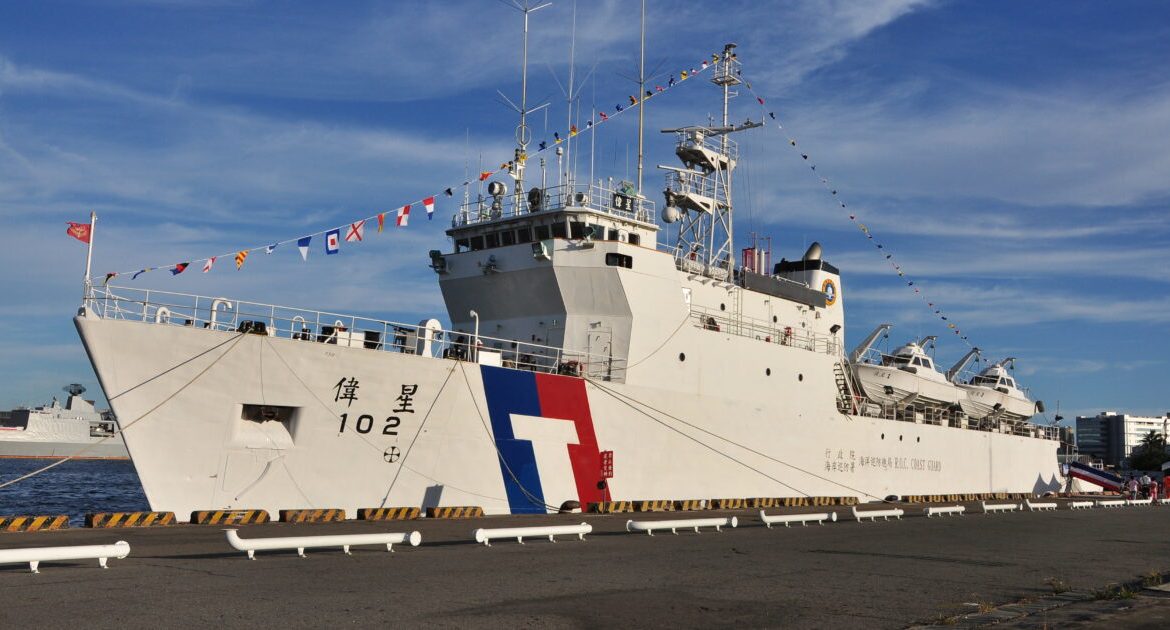
Chinese Ships Collide: Karmic Payback for Years of Bullying the Philippine Coast Guard


On an ongoing basis, the Chinese Coast Guard has harassed and intimidated Philippine Coast Guard and fishing vessels in the South China Sea. China claims almost the entire sea, while the Permanent Court of Arbitration has rejected China’s claims. As the Philippine ships and vessels continues to use territory which the world recognizes as belonging to the Philippines, China has historically used bully tactics, blocking, ramming, and damaging Philippine vessels or shooting them with high powered water cannons. This week, China was dished some karmic justice when two of its bully ships collided, rendering one of them on seaworthy.
This increased aggression by China is one of the primary reasons why the US Navy conducts freedom of navigation patrols in the region.
On Monday, August 11, 2025, two Chinese vessels collided while pursuing Philippine Coast Guard ships near Scarborough Shoal in the South China Sea. The Chinese Coast Guard cutter CCG 3104 struck the PLA Navy guided-missile destroyer Guilin (hull number 164) a botched blockade attempt.
The clash occurred as Philippine Coast Guard vessels BRP Teresa Magbanua and BRP Suluan escorted the fishing vessel MV Pamamalakaya and 35 local fishing boats as part of Manila’s Kadiwa Operation, which delivers fuel and supplies to Filipino fishermen operating in the country’s western exclusive economic zone.
Philippine Coast Guard spokesman Commodore Jay Tarriela said CCG 3104, while chasing the BRP Suluan at high speed, attempted a risky maneuver from the vessel’s starboard quarter. The cutter’s movement caused it to ram into the Guilin, which was approaching from the other side. Analysts believe the Chinese ships were trying to “sandwich” the Philippine cutter, forcing it into the path of a close-range water cannon blast. Poor coordination turned the maneuver into a self-inflicted collision.
The impact left CCG 3104 “unseaworthy,” with significant damage to its bow and forecastle. The Chinese crew did not respond to the Philippine ship’s offer of assistance, and it remains unclear if there were any injuries.
The involvement of the Chinese Navy destroyer Guilin in the Scarborough Shoal collision was considered highly unusual and “overkill” by analysts. PLA Navy warships typically remain “over the horizon” and avoid direct engagement, leaving such confrontations to the Chinese Coast Guard. This made the August 11 incident one of the most severe encounters between Chinese forces and the Philippines, highlighting the escalating tensions in the South China Sea.
Scarborough Shoal has been a persistent flashpoint since China seized it from the Philippines in 2012. Since then, Beijing has waged a steady campaign of harassment against Philippine civilian and government vessels, which has intensified in recent years. In February 2023, a Chinese Coast Guard vessel used a military-grade laser against a 44-meter Philippine Coast Guard ship during a resupply mission.
In March 2024, Chinese ships deployed water cannons on Philippine vessels, shattering a windshield and injuring crew members. The following month, three Chinese cutters rammed and blasted Philippine patrol boats with water cannons near Scarborough Shoal, while others threatened Filipino fishermen at Iroquois Reef. In January 2025, multiple Chinese vessels made aggressive maneuvers toward Philippine fisheries boats, forcing the suspension of a scientific survey.
Beijing justifies these actions through its “nine-dash line” claim, which asserts Chinese historical rights over roughly 90 percent of the South China Sea. The claim is based on a 1947 map created by the Nationalist government and later adopted by the Communist regime, citing historical records dating back to the Han Dynasty. Despite a 2016 international arbitration ruling rejecting the nine-dash line as having “no legal basis,” China has ignored the decision and continued to enforce its claims.
By enforcing the nine-dash line, Beijing seeks to transform these international waters into de facto sovereign territory in a process experts call “maritime territorialisation.”
Strategically, the South China Sea is a vital artery for global trade, with $3.36 trillion worth of goods passing through annually, including 80 percent of China’s energy imports. The waters are also rich in fishing grounds and contain large reserves of oil and natural gas.
Ironically, China is a signatory to the United Nations Convention on the Law of the Sea (UNCLOS), while the United States is not. Yet it is the U.S. that serves as the principal enforcer of the law, and China that stands as its principal violator.
The post Chinese Ships Collide: Karmic Payback for Years of Bullying the Philippine Coast Guard appeared first on The Gateway Pundit.
